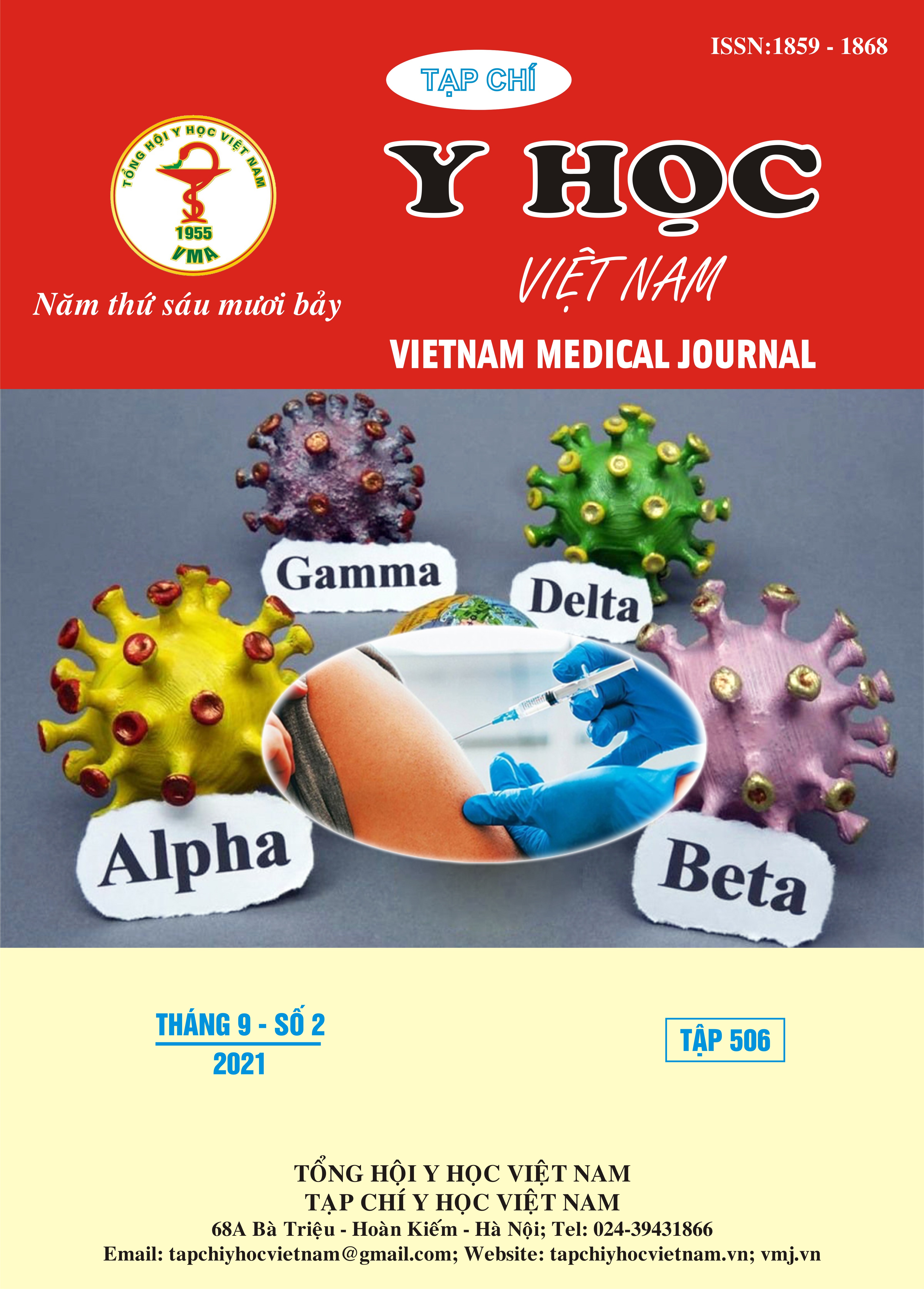PRELIMENARY ASSESSMENT OF SEPTIC ARTHRITIS AND SOFT TISSUE INFECTION IN THE DEPARTEMENT OF RHEUMATOLOGY, BACH MAI HOSPITAL FROM 2020 – TO 2021
Main Article Content
Abstract
Background: In recent years, the rate of septic arthritis and soft tissues infection has been increasing among inpatients group, treated at the Departement of Rheumatogogy, Bach Mai Hospital. The causes and risk factors of joint and soft tissue infections are a matters of great concern for clinicans in order to give patients, the best treatment and prevention strategies. Objective: To assesse the causes risk factors related to the joint and soft tissue infections. Methods: A cross- sectional study. The causes and risk factors were evalated on 194 patient with septic arthritis and soft tissue infection who were diagnosed and treated in the departement of Rheumatology, Bach Mai hospital from August, 2020 to June, 2021.Results: 194 patients with mean age 55,7 ± 14,6,male accounted for 68%, mainly from rural areas. The proprortion of septic arthritis was 25.7%, soft tissue infection was 34,9% and 39,4% patients with both two of two disorders. The rate of positive bacterial culture in joint fluid and pus from abscess was 49,5% and 43,3% respectively and the rate of positive bacterial culture in the blood was 24,5%. MRSA was the predominant pathogen, with 60% in joint fluid, 63,4% in the pus from abscess and 72% in blood culture. The majority of patients had obvious risk factors for access, accounted for 81,4% (n=158). Significant risk factors of joint and soft tissue infections included: skin and soft tissue infections (39,4%); post intra-articular and soft tissue injection (25.2%); Intra-articular and soft tissue injection (13,3%); a history of certain comorbidities such as: immunodeficiency and use of immunosuppressive drugs, gout, diabetes, alcoholism, osteoarthritis, cirrhosi... Conclusion: Septic arthritis and soft tissue infections mainly occur in men, elderl, patients who live rural areas. MRSA is the most common pathogen. Previous adjacent infections and post medical procedures in reumatology are two of the most common facrors.
Article Details
Keywords
Septic arthritis, soft tissue infection, risk factor
References
2. Phùng Đức Tâm ( 2019), Biến chứng nhiễm khuẩn do tiêm khớp và tiêm phần mềm cạnh khớp tại tuyến dưới được chẩn đoán và điều trị tại khoa Cơ Xương Khớp bệnh viện Bạch Mai, Tạp Chí Học Việt Nam Tháng 5. 2019;478(Số đặc biệt), 191-197.
3. Mathews CJ, Weston VC, Jones A, Field M, Coakley G (2010), Bacterial septic arthritis in adults, The Lancet, 375(9717), 846-855. doi:10.1016/S0140-6736(09)61595-6
4. Newman JH (1976), Review of septic arthritis throughout the antibiotic era, Ann Rheum Dis,
35(3), 198-205. doi:10.1136/ard.35.3.198
5. McBride S, Mowbray J, Caughey W, et al. Epidemiology (2020). Management, and Outcomes of Large and Small Native Joint Septic Arthritis in Adults, Clin Infect Dis;70(2), 271-279. doi:10.1093/cid/ciz265
6. Favero M, Schiavon F, Riato L, Carraro V, Punzi L (2008), Rheumatoid arthritis is the major risk factor for septic arthritis in rheumatological settings, Autoimmun Rev,2008;8(1), 59-61. doi:10.1016/j. autrev.2008.07.018
7. Eun Jin Kim, Kyoung Hwa Ha, Dae Jung Kim, Young Hwa Choi (2019), Diabetes and the Risk of Infection, A National Cohort Study, Diabetes Metab J, 43(6). doi:10.4093/dmj.2019.0071


